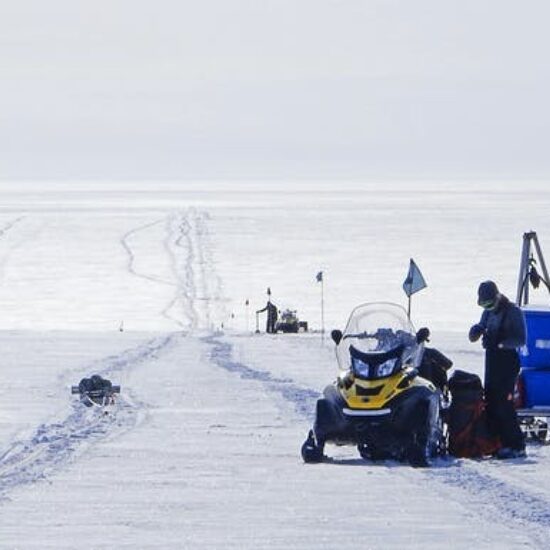Workshop Report: Sensitivity of the West Antarctic Ice Sheet to +2 °C (SWAIS 2C)
Citation: Patterson, M. O., Levy, R. H., Kulhanek, D. K., van de Flierdt, T., Horgan, H., Dunbar, G. B., Naish, T. R., Ash, J., Pyne, A., Mandeno, D., Winberry, P., Harwood, D. M., Florindo, F., Jimenez-Espejo, F. J., Läufer, A., Yoo, K.-C., Seki, O., Stocchi, P., Klages, J. P., Lee, J. I., Colleoni, F., Suganuma, Y., Gasson, E., Ohneiser, C., Flores, J.-A., Try, D., Kirkman, R., Koch, D., and the SWAIS 2C Science Team: Sensitivity of the West Antarctic Ice Sheet to +2 °C (SWAIS 2C), Sci. Dril., 30, 101–112, https://doi.org/10.5194/sd-30-101-2022, 2022.
Plain English abstract
The Sensitivity of the West Antarctic Ice Sheet to +2 °C (SWAIS 2C) Project aims to answer the key question ‘Does the Paris climate target save the Ross Ice Shelf and limit Antarctic ice sheet melt’? To answer this question, we need geological records from the centre of West Antarctica. This will help scientists better project the amount of sea-level rise in our warming climate.
There’s a 700 metre (765 yard) -thick slab of floating ice lying between us and the key environmental information we need to recover and study. Researchers, engineers, and drillers in the SWAIS 2C Team will recover sediment cores from beneath the Ross Ice Shelf close to the grounding zone of the Kamb Ice Stream and Crary Ice Rise. No one has ever drilled deep into the Antarctic seabed at a location so far from a major base, and so close to the centre of the West Antarctic Ice Sheet.
The resulting geological records will help reveal how sensitive the Ross Ice Shelf and West Antarctic Ice Sheet are to past warming similar to the 1.5 to 2°C (2.7° to 3.5°F) target set in the Paris Agreement.
Scientific abstract
The West Antarctic Ice Sheet (WAIS) presently holds enough ice to raise global sea level by 4.3 m if completely melted. The unknown response of the WAIS to future warming remains a significant challenge for numerical models in quantifying predictions of future sea level rise. Sea level rise is one of the clearest planet-wide signals of human-induced climate change. The Sensitivity of the West Antarctic Ice Sheet to a Warming of 2 ∘C (SWAIS 2C) Project aims to understand past and current drivers and thresholds of WAIS dynamics to improve projections of the rate and size of ice sheet changes under a range of elevated greenhouse gas levels in the atmosphere as well as the associated average global temperature scenarios to and beyond the +2 ∘C target of the Paris Climate Agreement.
Despite efforts through previous land and ship-based drilling on and along the Antarctic margin, unequivocal evidence of major WAIS retreat or collapse and its causes has remained elusive. To evaluate and plan for the interdisciplinary scientific opportunities and engineering challenges that an International Continental Drilling Program (ICDP) project along the Siple coast near the grounding zone of the WAIS could offer (Fig. 1), researchers, engineers, and logistics providers representing 10 countries held a virtual workshop in October 2020. This international partnership comprised of geologists, glaciologists, oceanographers, geophysicists, microbiologists, climate and ice sheet modelers, and engineers outlined specific research objectives and logistical challenges associated with the recovery of Neogene and Quaternary geological records from the West Antarctic interior adjacent to the Kamb Ice Stream and at Crary Ice Rise. New geophysical surveys at these locations have identified drilling targets in which new drilling technologies will allow for the recovery of up to 200 m of sediments beneath the ice sheet. Sub-ice-shelf records have so far proven difficult to obtain but are critical to better constrain marine ice sheet sensitivity to past and future increases in global mean surface temperature up to 2 ∘C above pre-industrial levels. Thus, the scientific and technological advances developed through this program will enable us to test whether WAIS collapsed during past intervals of warmth and determine its sensitivity to a +2 ∘C global warming threshold (UNFCCC, 2015).

Stage of mission: Project preparation
Contributing parties
- International Continental Scientific Drilling Program
- Alfred Wegener Helmholtz-Zentrum für Polar- und Meeresforschung
- Bundesanstalt für Geowissenschaften und Rohstoffe
- Korea Polar Research Institute
- Natural Environmental Research Council
- National Institute of Polar Research
- Istituto Nazionale di Geofisica e Vulcanologia
- Australian and New Zealand IODP Consortium
- AuScope
- National Science Foundation
- Antarctic Science Platform

